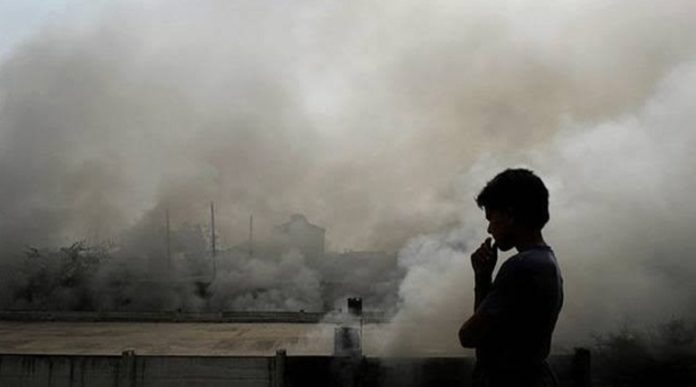New Delhi (NVI): The air pollution levels in India has shorten the average life expectancy of an India by 5.2 years, and the residents of Delhi could see 9.4 years added to their lives if pollution is reduced to meet the WHO guidelines, according to new report.
The report was based on an analysis of 20 years of pollution levels has been found by the Energy Policy Institute at the University of Chicago (EPIC).
India is today the world’s second-most polluted country after Bangladesh and 84 per cent Indians live in areas which exceed India’s own air quality standard.
According to the report, “Air pollution in India shortens the life expectancy of an average India by 5.2 years relative to what it could be if the guidelines of WHO are met. It decreases by 2.3 years if the country meets its own standards.”
A quarter of India’s population is exposed to pollution levels not seen in any other country, 248 million residents of northern India on track to lose more than 8 years of life expectancy, if the pollution levels persist.
Some regions in India fared much worse than the average, with air pollution shortening lives by 9.4 years in the national capital Delhi, and 8.6 years in Uttar Pradesh, the most polluted state, the report said.
Meanwhile, the Air Quality Life Index data in the report was averaged across women, men and children globally, and covers period between 1998 and 2018.
The report further said that, India’s capital Delhi is also highly polluted adding that the residents of Delhi could see 9.4 years added to their lives if pollution is reduced to meet the WHO guideline and 6.5 years if pollution met India’s national standard.
The highest loss of life expectancy in India was in UP’s capital Lucknow, which has the highest pollution level in the country — 11 times greater than the WHO guideline, said the report. Its residents stand to lose 10.3 years of life expectancy if the same pollution levels persist.
Since 1998, average annual participation pollution has increased 42 per cent, cutting 1.8 years off the life of the average resident over these years.
Notably, a quarter of India’s population, mainly those living in Indo Gangetic Plain (IGP) region, was exposed to pollution levels not seen in any other country.
In a similar report done in 2019 by the Institute, it was found that there was a 72 per cent increase in pollution from 1998 to 2016 in IGP region home to about 40 per cent of India’s population.
However, the report was authored by Michael Greenstone, Milton Friedman Professor in Economics at University of Chicago and Claire Fan, pre-doctoral fellow with the EPIC.
-RJV








